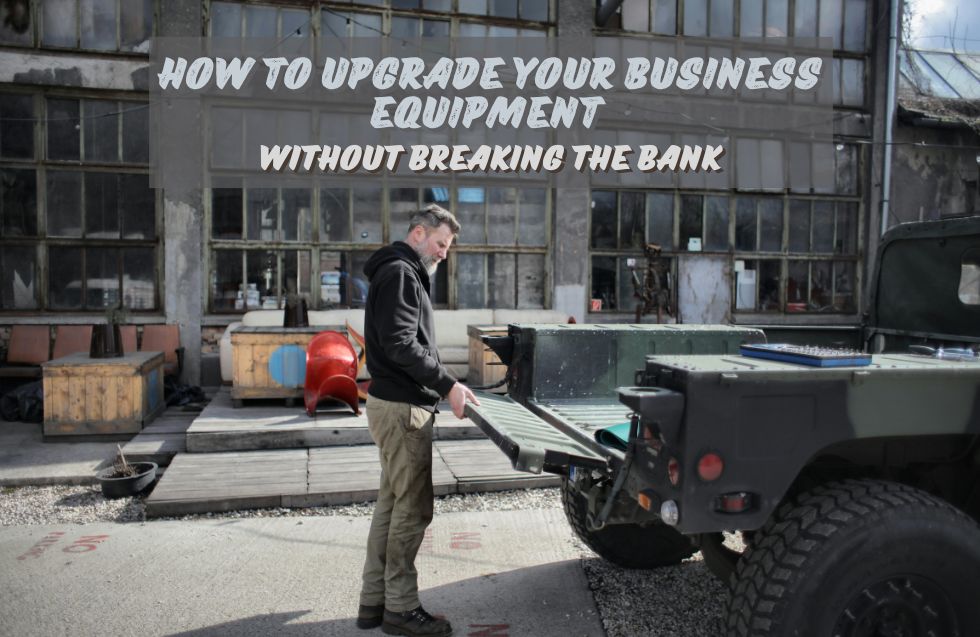In 2023, the business equipment landscape contended with a 2% decrease in global foreign direct investment (FDI), which fell to $1.3 trillion. This downturn, driven by intensifying geopolitical tensions and decelerating economic growth, disproportionately affected developing nations. Yet, amidst these economic headwinds, certain sectors showcased remarkable resilience. Notably, the services trade, encompassing technology and travel-related industries, expanded by 8%.
This growth underscores the potential within specific markets to thrive even during broader economic instability. Against this backdrop, upgrading your business equipment becomes not just an operational necessity but a strategic imperative. This post delves into cost-effective strategies for modernizing your business tools, ensuring your operations are equipped to navigate and capitalize on these complex economic times.
Evaluate Financing Options
Securing new equipment often begins with understanding your financing options. You can choose from loans, leasing agreements, or even short-term rentals depending on your needs and financial flexibility. For instance, if you’re exploring heavy truck financing, it’s essential to research and compare terms from reputable lenders.
Doing so ensures you secure the best financial agreement for your situation, balancing cost with cash flow needs. Diving into the specifics, explore the difference in interest rates between various financial instruments and how they impact your total payback amount. Clarify these financial aspects early to avoid surprises later and maintain a healthy business operation.
Consider Buying Used or Refurbished Equipment
A smart way to cut down on equipment expenses is to go for used or refurbished items. They can be much more affordable than new ones and often still perform well. Just make sure to check that everything is in good shape and meets safety standards.
This step is essential to make sure you get your money’s worth without sacrificing quality. Consult experts who know how to inspect the type of equipment you’re looking for. Taking this precaution can save you from expensive repairs or downtime later on.
Take Advantage of Trade-Ins
Trade-in programs can ease the cost of buying new equipment. Many suppliers let you exchange old gear for discounts on your new purchases. To get the best deal, check the trade-in value of your old equipment and talk to suppliers about favorable terms.
This strategy lowers your upfront costs and helps you get rid of old items in an environmentally friendly way. Plus, consider the time you save and how smoothly you can switch to new technology, which can quickly improve your operations. By leveraging these programs, you keep your business agile, adapting to new tools without skipping a beat or breaking the bank.
Look for Government Rebates and Tax Incentives
Consider exploring government rebates and tax incentives, which can drastically cut costs when you upgrade. These programs generally support investments in energy-saving or cutting-edge equipment. To benefit, you need to stay updated on available government schemes and understand the eligibility requirements.
This effort can lead to substantial savings, making it a worthwhile consideration for any upgrade plan. Reach out to a financial advisor or a specialist in business taxation to ensure that every possible saving is utilized and compliance is maintained.
Opt for Modular Upgrades
Choosing modular equipment that can be upgraded incrementally is another cost-effective solution. This approach allows you to enhance components of your equipment as needed, without the need for a complete overhaul.
Modular upgrades can be particularly beneficial for technology and machinery, where continuous improvements are common. By upgrading parts rather than whole systems, you manage costs more effectively and reduce waste. It keeps your operations flexible, allowing you to adapt to new technological updates smoothly and affordably.
Maintain and Repair Existing Equipment
Maintaining and repairing existing equipment can extend its life and defer the need for expensive replacements. Establishing a routine maintenance schedule and responding quickly to repair needs keeps your equipment in top condition, reducing downtime and costly emergency fixes.
Hiring capable technicians and insisting on quality parts for repairs helps maintain efficient operation, thus maximizing your initial investment. Develop relationships with reliable service providers who can deliver fast and dependable service, especially crucial during busy periods.
Final Thoughts
Upgrading your business equipment with a plan can substantially boost your company’s efficiency and financial health. Exploring financing, buying used or refurbished items, using trade-ins, taking advantage of government incentives, opting for modular upgrades, and regular maintenance can help you cut costs while enhancing technology.
Think through your equipment upgrade strategy and weigh several considerations to land on the best decision. Investing wisely in your business equipment sets the stage for continued growth and success.












